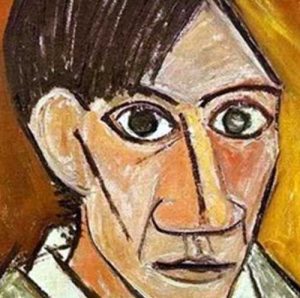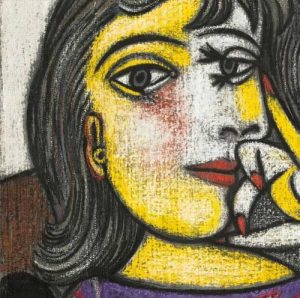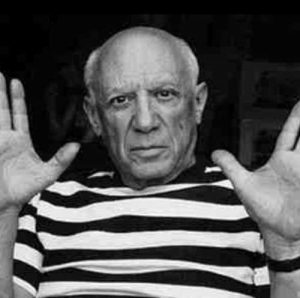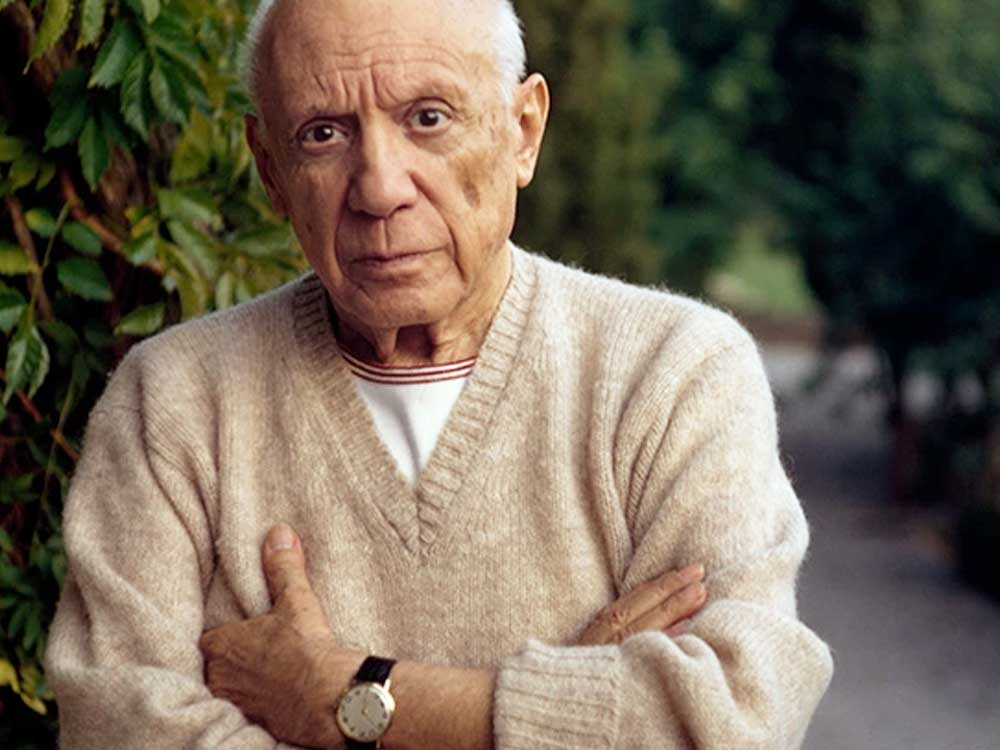Known by many names (such as Picasso, Manet, Goya, Cubism, Monet and Fauvism), Pablo Picasso is a famous and highly respected artist, whose work greatly influenced modern art. Born in Madrid, Spain, Picasso spent much of his early life in France, where he became known for his highly innovative art style. A pioneer in the medium of modern art, Picasso’s work still enjoys high popularity in today’s art scene. In fact, Pablo Picasso’s “Cubism” has become a major force in modern art, and it is widely accepted as the guiding principle behind much of modern, contemporary art.
Picasso’s career is widely acknowledged as one of the key moments in the shaping of modern art, as his radical, provocative artwork created new realms of freedom and imagination. His style, which mixes elements of realist art with impressionism, formalism, and pop art, remains highly influential. However, Picasso’s greatest artistic achievement remains his series of pioneering works that completely reshaped the possibilities of modern art. It is undeniable that Picasso’s “Cubism” was one of the most significant artistic moments in modern history. A highly respected Picasso exhibition will open up horizons for art lovers all around the world.
Pablo Picasso’s “Cubism” represents an early milestone in modern art and showcases Picasso’s distinctive technique as a master painter. Pablo Picasso’s “Cubism” series is a famous representative of his development of the dynamic field of painting. It is important to note that Picasso’s “Cubism” is in fact a refraction of his fascination with the nature of reality. Pablo Picasso’s “Cubism” trilogy,” Pablo Picasso: Fause et Chloine”,” Pablo Picasso: La Vida Picasso” and” Pablo Picasso: The Aragonite Painting” are all seminal works which have helped define the nature of modern art and have earned Picasso the reputation as one of the most famous artists of all time. Undoubtedly, these three paintings represent some of the key achievements in Picasso’s long and distinguished career.
“Picasso, penso delle Mani” (Penicola, The Chapman Dance), originally titled as “Daughter at Work” (1907), is a beautiful example of the master artist’s use of expressive painting to depict basic human actions, and emotions. In this series of paintings, Picasso vividly captures everyday human actions, such as bread baking, house cleaning, and meal preparation. The central theme in this painting, the bread, is symbolic of bread made with love. The use of the kneaded dough and the inclusion of fruit and baked goods completes the symbolism of this work. The work also includes a well-defined and powerful brushstroke style that is characteristic of Pablo Picasso’s artwork. Although there is considerable repetition of figures found in real life, Picasso adopts a repetitive style that seems almost mechanistic and often includes objects that seem insignificant, but which are actually very meaningful to Picasso.
“Versos del chimenea” (versos, The Claddagh) is another great example of Pablo Picasso’s creativity and artistic vision. In this series of paintings, Picasso vividly portrays the pain and suffering inflicted on the citizens of the Spanish town of La Rioja by the victorious Nationalists (Ferraro Party, Spain) during the Spanish Civil War. Similar to the “Chapman des guises” (Chapman of the Guises) painting, this painting has a clearly defined theme, although its exact content is somewhat vague. This painting also includes lively, happy cows.
All these famous paintings, even if they don’t accurately portray the true nature of life, are an excellent example of Picasso’s greatness. Even if you don’t agree with him on some of his political and social views, you will always admire his artistic achievements and will be proud to own one of Pablo Picasso’s paintings. Nowadays, when you see a Picasso painting, you automatically imagine someone who is highly conscious about how he looks and who is full of life and happiness.
Famous Paintings by Pablo Picasso
When you are looking for great works of art that display the work of Pablo Picasso, there is a lot to choose from. Known as one of the most influential artists of the 20th century, his influence reaches all aspects of culture and society from sculpture to painting. His influence was such that many people refer to him as a “literary Picasso,” since many of his works contain stories, or meditations on life. It is easy to understand why Picasso’s work has been held in high regard for so long.
One of the first places that one should look for when searching for the perfect work by Picasso is the series of reproductions that are now available. These reproductions have been produced using the original masterpieces, but in a different format. This is what gives them their authenticity.
- Pablo Picasso’s “Cubism” is another influential aspect of his work that is worthy of exploring. This work is characterized by irregular figures, which Picasso used as an element of expression. The forms of these figures, irregular and unique in form, are combined in unusual ways in order to bring even more meaning to the message that they carry. As with everything that Picasso created, this style of art is famous today and can be found in many private collections around the world.
- Pablo Picasso’s “Hiver” is perhaps the most famous of all his paintings. This is because it represents Picasso’s break with traditional forms. Instead of following the conventions of art, such as the elongated “rait,” he brings his work in an entirely new direction by including many small images, all meant to look like flowers. This was a very important development in his career and is what ultimately led to his own mental breakdown. Many people consider this to be his most beautiful work, and it formed a big part of the collection of art that followed.
- Pablo Picasso’s “Cubism” is also known as “line painting,” and his style of working is very popular amongst conceptual artists of the time. The large size and shapes of his objects (all done in single, large brush strokes) have made it a favourite with artists of various stripes. It was through this style of painting that Picasso distinguished himself from the others of his peers and paved the way for a whole new way of interpreting art. He would become known as the “Dagger of the Art World” and “Picasso of the Guernica.” Though this particular type of art has become increasingly popular in modern times, many artists still identify with the spirit of Picasso’s “Cubism.”
Pablo Picasso’s life and work are an inspiration for many, and many artists continue to paint inspired works based on his life. His legacy in the art world is undeniable and continues to influence the work of countless others. A walk down the street will show many paintings of Picasso, and the demand for more of his work has kept this artist’s name alive for decades. As long as there are paintings, there will be interest in his work and he will continue to be an inspiration to so many.
Pablo Picasso Birthplace
Pablo Picasso Birthplace is a great source of information about this famous artist. It gives one an idea of the hardships that he had to go through in his life, and also how people responded to him. In his early life, Picasso was homesick and spent considerable time in Paris as an illustrator and painter. Here are some interesting facts about Picasso’s birthplace and his art.
Pablo Picasso was born in Mexico City, and his birthplace is called La Mirada. It is not very far away from Paris. There is a huge statue of Picasso near the railway station in Mirada. The Picasso family had a rather poor financial status. When Picasso was a young boy, his father died, and he was brought up by his brother.
Pablo Picasso had a rather strange upbringing. His mother used to shout at him because she didn’t like his paintings. Even though his father was a ‘gentile’, he ‘respected’ the artist and would buy anything that the artist painted, no matter how poor it was. This included animal skins, which his brother kept for him to sell later. However, Picasso ignored all of his father’s requests, painting instead what he saw around him.
Picasso’s unconventional and bold style of painting brought him many admirers, but they did not always appreciate his artistic vision. Some called him “a crazy man”. Others said that his paintings showed him to be ‘insane’. Pablo Picasso lived with his nanny for the last 15 years of his life. The two never met, but he confided in her about his feelings for her. One day, his nanny found a letter from Picasso, and that is when they first discussed the idea of him publishing his own work.
It was not long before Picasso began to paint fashion magazines and exhibitions and even began traveling to Barcelona to present his art to the public. After that, he decided to move to Mexico, where he lived for the next twelve years. When he returned to Paris, it was to attend the Impressionist exhibition, which he was highly encouraged to participate in by Louis Sullivan, owner of the Chicago Art Gallery. Eventually, Pablo Picasso set up his own studio.
As you can see, Pablo Picasso did have many struggles and setbacks throughout his life, but, he was always happy and positive. If we want to be happy and successful, then we must learn from his example. Continue to learn, read, and watch others do things differently, and follow their lead. Do not be afraid to make mistakes, and try not to let them stop you from your dreams. Remember, there is always room for improvement.
Pablo Picasso’s Cubism
Pablo Picasso, a Cubist artist, is best known for his Cubism and his Les Demoiselles d’Avignon series. His art style was characterized by thick brush strokes, elongated shapes, and bright colors. The work of Picasso is known throughout the world and is greatly respected for its boldness and brilliance.
Picasso’s painting “Cubism” is a reworking of himself into abstract art form. This work is considered to be one of his most well-received art pieces and is usually found in art galleries and private collections around the world. Picasso first used the term “Cubism” when referring to his series of “Cubist paintings” in which each piece was focused on a single color.
The painting “Cubism” Picasso produced during the early days of his career included scenes from the life of Cezanne, which he based his art on. These works include The Night Watching over the Ocean (1907), The Paseo (1909), Think (1912), and Seated Woman (1912). Pablo Picasso’s art style was characterized by these single-minded works that he called “Picasso Cubism”. The only common element across all of his Cubism paintings was the repetition of basic shapes and colors. The repetition represented his belief that beauty is pure and that all creation in nature belongs to the artistic mind and not to the senses. The repetition was seen as essential to the art, and he felt that he needed to channel the creative energy through only one point.
After a few years of producing his series of “Picasso Cubism” works, Picasso began to experience a decline in his painting quality. In the late 20th century he was forced to paint with paper-based paints due to his unhealthy diet and lack of physical activity. In reaction to this, he began experimenting with new forms of art, like Synthetic Cubism, Minimalism, Fauvism, and Pre-Raphaelites. All these artistic styles stressed the importance of the form in painting and concentrated on smoothness instead of complexity. However, Picasso’s “Cubism” was not immediately successful and it took him until later to perfect the use of his “Cubist” style in his art.
 Pablo Picasso’s “Cubism” is recognized today as one of the most important art periods in modern art. This is because Picasso used this painting style in almost all of his paintings from his major series to his minor series. Although this painting style was not well received by the art public at first, this soon changed as more people became familiar with Picasso’s work and his style. He used his Cubism painting style in conjunction with other forms of art to create the masterpieces that he was famous for.
Pablo Picasso’s “Cubism” is recognized today as one of the most important art periods in modern art. This is because Picasso used this painting style in almost all of his paintings from his major series to his minor series. Although this painting style was not well received by the art public at first, this soon changed as more people became familiar with Picasso’s work and his style. He used his Cubism painting style in conjunction with other forms of art to create the masterpieces that he was famous for.
Pablo Picasso’s “Cubism” was first showcased in his “Cubism” series and was followed by his “entinosis” series. These two works greatly influenced the artists who followed after him, and they all used their own unique versions of the Cubist style in their artwork. Today, this painting style still predominates in the art world and has inspired many artists such as Guercino, Warhol, Rothko, and others to paint. This is why Pablo Picasso’s “Cubism” remains so popular and influential to modern day artists.
Pablo Picasso’s Cubism Paintings
Pablo Picasso is one of the most renowned artists of the modern era. He created over 75 paintings during his life, and most people agree that he produced some of the most beautiful work in the world. Some people consider him to be the pre-eminently “Cubist” artist of the 20th Century. All art works, no matter how large or small, can be classified in this particular category.
One can classify Pablo Picasso paintings into two main categories; Monochrome/Realism and Cubism. The work of Pablo Picasso, which is sometimes referred to as “Cubism,” consists mainly of full-color, charcoal filled canvases. The full-color paintings tend to have recognizable themes running throughout them. These themes tend to relate to music, food, or other everyday items.
The paintings which are done in Cubism, on the other hand, works that have a blurred or irregular appearance to them. The colors are often too busy and there are too many gradations in color intensity. This type of painting is more complicated than its monochrome counterpart. This style is often associated with artists who do not work in the traditional mediums such as oil or acrylic.
The Picasso painting “Mysteries” is a perfect example of an example of cubism. This painting represents Picasso’s trip to his “home town,” which was Malaga, Spain. In this painting, Picasso represented Spain through his use of greens, blues, and reds. Other prominent art works done by Picasso include “Daleks,” Pablo Picasso’s Les Demoiselles d’Avignon.” The “Cubism” sub-genre of painting is widely used by modern painters.
The Spanish art publisher, Alejo Guedes, found a publisher for Pablo Picasso in 1950. Guedes wanted Picasso to create a series of paintings for him, but Picasso did not agree. Guedes, who was illiterate, managed to hire a few artists to help him complete the project, but he still could not complete the painting. When Guedes died, Pablo Picasso went into exile, eventually living in New York City. Many of Pablo Picasso’s paintings have become a major collector’s items around the world.
Today, many art galleries display works from this unique genre of cubism. Most people are familiar with “Cubists” like Goya, Monet, and Monet’s girlfriend, the French impressionist, Paul Gauguin. But Picasso is a true artist, using his camera as an expressive tool instead of a paintbrush. This style of painting, called “Picassoism,” has become widely accepted by the art world.
Pablo Picasso Ceramic Tableware – The Masterpieces
Pablo Picasso’s Les Demoiselles d’Avignon (1907) marked a turning point in Spanish art, when he created Ceramics. The artist began experimenting with new materials and styles, to push the limits of conventional art. Known for his radical approach to color and form, Picasso used ceramics to create portraits, landscapes, and statues that delighted both the art public and Spanish royalty. Although he was a recluse who avoided the limelight, his art earned him a reputation as one of the most exciting artists in Spain. He was approached by the nobility in the early twentieth century to collaborate on some of their commissioned works, which resulted in a remarkable career that spanned four decades. This article covers the many famous pieces produced by Picasso.
- The “DT Cup” is a large-scale portrait that represents Picasso’s struggle with weight and form. The piece consists of sixty individual pieces, all made from a single clay slab. The individual pieces were individually decorated and are arranged in a unique manner, creating an array of different effects. The piece represents Picasso’s frustration with the restrictions of his height, as he struggled to achieve acceptable proportions.
- The “DT Caterer” is a unique mass-produced piece that represents Picasso’s experimentation with ceramics. The mass produced piece consists of sixty-four clay dishes, each representing a dish that a favorite restaurant had served. The artist mixed and matched styles, colors, and ceramics to create an original composition. As far as his art goes, this is the pinnacle.
- The “DT Caterer” is often reproduced as a coffee table book. It contains pictures of Picasso’s favorite restaurants, with brief descriptions of the paintings involved. The pieces are arranged according to the style of the restaurant, and are often accompanied by recipes or serving food. The recipes themselves are sometimes written in Spanish, giving even more meaning to this extraordinary ceramic.
- The “DT Caterer” is very collectible because so few people have the actual pieces. Only the best artists own these masterpieces, and they often keep them stored in museums, private collections, or in private homes. Picasso’s reputation preceded him, and these pieces are kept by those who admire his vision. There are several versions of this table. One version has an opening in the middle, where the diner can place his order for his meal. Another has three sections, with an opening on each side.
One of the most famous of all Pablo Picasso ceramic pieces is the “Cubism”. This work, completed in 1960, is a series of eighty-two small pieces that are made into a large mosaic mural. The artist created it while he was staying at the Hotel Figueres in Barcelona. It depicts a landscape of rural life, and is well worth a look.
What is Surrealism Art?
If you have ever seen the movie “Memento,” you are familiar with the work of surrealism art. It was created by the surrealist artist surreal (also called sid | artist) brothers surreal, Paul Durand and Maxime Rodan. Though they were together during the early years of their careers, it wasn’t until after their death that their influence was truly felt.
Surrealism art came from two different artistic influences. The first comes from the naturalism of French artist Manet, who was fascinated by the chaos, distortion, and fluidity of his paintings. Realist artists, on the other hand, saw things differently and focused more on the reality of their subject matter. Surrealism was an artistic movement that developed in Europe during the late nineteenth century and was largely inspired by Dada. The movement is most famous for its surreal artworks and various writings and the often-surrealistic juxtaposition of everyday objects to stimulate the subconscious mind.
Artists like Camille Pissar, Paul Gauguin, and Edvard Munch would often paint flat out portraits of people. Others painted graffiti on walls. Edvard Munch’s unsettling artwork is sometimes described as a type of surrealism due to its suggestive subject matter and the strange angles in which he paints.
 The term “surrealism” is often associated with political or pop art. These pieces are usually darkly colored and have a noticeable gray tone. They are usually about subjects that seem to be out of place – such as deep layers of snow, sea animals swimming merrily on the surface of the water, or stacks of dead flowers that have been placed about an ordinary table. They also often use bright colors like reds, oranges, or yellow.
The term “surrealism” is often associated with political or pop art. These pieces are usually darkly colored and have a noticeable gray tone. They are usually about subjects that seem to be out of place – such as deep layers of snow, sea animals swimming merrily on the surface of the water, or stacks of dead flowers that have been placed about an ordinary table. They also often use bright colors like reds, oranges, or yellow.
David Hockney is perhaps best known for his surrealist paintings of the London skyline. A lot of his work from this era focuses on the River Thames. Some of his more famous works include Horse With Head hung over a fireplace in the Soho neighborhood of Bloomsbury, and his Les Demoiselles d’Avignon (The Man With Two Heads) is still one of the most famous examples of surrealism. In fact, the word “surrealism” had its first mention in a letter written by Hockney to fellow British artist Siritri van Gogh.
Today, you can find a variety of abstract art pieces in homes, offices, and art galleries. They can include natural scenes like trees and flowers, or they can include portraits of people. Some of them feature animals, while others are portraits of abstract subjects. Others are designed to make a statement about our culture. Surrealism art is very popular and continues to influence modern artists like Jasper Johns and Jasper Zetkin.
Expressionism Art Through Paintings
Expressionism art form was born out of the art movement called Art Movements of Cubism. This group of artists, all of which were living in Germany during the 1920s, strove to depict everything in terms of form as opposed to content. In this way they tried to make art more abstract, and much more “abstract”. In its infancy, expressionism had very distorted forms, such as Dadaism, surrealism, pop, Pre-Raphaelites, and surrealism. With time, these styles have become known as expressionism art form and are often described as an aesthetic approach to painting which makes use of strong imagery to evoke strong emotions in the viewer.
- Expressionism is an early modernist movement, first in painting and poetry, and later in film, theater, and music. Its main characteristic is to present the universe solely in terms of a subjective point of view, distorting it drastically for purely emotional impact to elicit desired emotions or thoughts. Expressionism’s key modernists were Czechs, who broke with the traditional style of European art by creating an impressionist art style that emphasized the use of strong images. The most famous of these painters and poets is Picasso, who completely changed the face of modern art when he painted The Spanish Woman in Barcelona in 1937.
- Expressionism paintings often make use of highly colored skies, which are used to emphasize certain effects, such as waterfalls or storms. The style of painting was highly influenced by the works of Cubists, who used highly colored tones in their work to make it seem like they came straight from the artists’ minds. However, Expressionism was not complete without the presence of a number of conceptual artists. These artists worked along the same lines as Cubists, using highly colored skies and objects to create powerful imagery, but this style of painting was less consciously political than the work of other artists of the time.
- Expressionism paintings often contain elements of abstraction, painting without reference to any particular culture, event, or person. This style was highly popular among artists who were either Jewish or had Jewish heritage. It was common for artists of this time to make anti-Nazi statements during their artwork due to the rise of Nationalism and anti-Hitler sentiment in Europe at the time. More recently, a resurgence of this style of art has been seen in the design of jewelry, specifically bracelets. Bracelets that utilize expressions of abstract expressionism have become extremely popular in recent years.
Another type of art movement that was popular during the decade that is known as the Art Nouveau movement was characterized by the development of painting techniques which included the use of bright colors and a rainbow of colors. This style of art was most popular among French artists who were particularly focused on simplifying their work for mass appeal. The popularity of this style is particularly notable in paintings such as Monet’s Seated Man (oration) and Monet’s Reflections. Other popular artworks from this era include Impressionism and Fauvism.
Expressionism paintings are among the most highly sought after in the world. Today, these paintings can be found in almost any major city across North America. In addition to being highly popular, this style of art has also become regarded as a rare piece. In fact, many collectors will go to great lengths to acquire works by some of the most renowned artists in this art movement.
Pablo Picasso – The Blue Period
Pablo Picasso’s Les Demoiselles d’Avignon (1907) is perhaps the most famous of all his paintings. It is a magnificent example of Cubism and it’s beauty, but it is also a direct descendent of Manet’s early art. The origins of Picasso’s “blue” are in the skies and the dark, mysterious recesses of the mind, and here he explores those same areas with his famous work.
 Picasso’s Les Demoiselles d’Avignon is a masterpiece of imaginative visual impression. It involves a central theme of heaven, angels, and earth, with highly contrasting yet highly symmetrical figures and colors. The blue tones used are very powerful, and in keeping with the work, there is no sense of foreground or background, as everything is so clearly defined and so different in appearance. The painting starts in a lighter blue and grows as it moves toward the deep, richer hue of blue.
Picasso’s Les Demoiselles d’Avignon is a masterpiece of imaginative visual impression. It involves a central theme of heaven, angels, and earth, with highly contrasting yet highly symmetrical figures and colors. The blue tones used are very powerful, and in keeping with the work, there is no sense of foreground or background, as everything is so clearly defined and so different in appearance. The painting starts in a lighter blue and grows as it moves toward the deep, richer hue of blue.
Many art historians credit the creation of this work to the influence of Paul Gauguin. Although Gauguin had established himself as a great Impressionist, Picasso, working from a rough sketch he made while on a trip to Spain, took these ideas and ran with them. He mixed many other elements into the painting too, like steel railings, smoke and mirrors, and the idea was that the “mithaniel” (Gauguin’s word for dark) and the “angel” (Picasso’s word for the men) were joined by another. This concept is explored fully in the next painting, Les Demoiselles d’Avignon.
The central subject of this painting is a scene from Avignon, in Spain. Here, Picasso has managed to combine two styles he was very familiar with, and this is where he got the idea for the style represented in this painting. After returning to Spain from France, he painted many buildings and scenes in Barcelona. The style represented there is something very familiar to us today, but it is not until you see the final artwork that you get a real idea of what Picasso was trying to achieve. This final work, Les Demoiselles d’Avignon, is often called a Picasso masterpiece because it conveys the full effect of his style in a single work of art.
As a matter of fact, much of this painting represents the avant-garde art of its time. This is especially true of the use of color. Blue was very popular at the time. It was in high fashion at that time, and Picasso used it often. The purity of the color, the stark contrast of light and shadow, the painterly attention to detail, and the overall imagery of the finished painting all help establish it as a classic.
The painting is often referred to as the masterpieces of Picasso’s life. In fact, one artist said that he made the mistake of thinking the painting was Picasso’s last, most meaningful attempt to express himself. He wanted it to be seen by everyone. This famous work has been shown at many galleries and is available for those who would like to see it.
Pablo Picasso Sculptures – Why They Are Still Visible Today
In the early days of his career Pablo Picasso’s name was linked with that of Cubists like Goya and Braque. However, it was not until later that Picasso’s name began to receive recognition in the art world. As a young artist he was struggling to make his mark and it was not until WWI broke out that he managed to attract attention from the world around him. This period saw Picasso travelling to Barcelona and Paris, where he worked with renowned artists such as Goya and Braque.
Life itself is a mystery, everything is possible, so why not turn it into an artwork? Pablo Picasso was a Spanish artist, ceramicist, printmaker, and theatre maker who spent the vast majority of his life in France. Many people today associate Picasso with the Cubists, but Picasso himself was an extremely private person who did not express political views throughout his life. Pablo Picasso’s sculptures are some of the most popular in the world, they’re bold, distinctive and unique. All you need to do is take a look at Pablo Picasso’s ‘Cubism’, you’ll know exactly what I mean!
The origins of ‘Cubism’ can be traced back in the years when Picasso, Goya, and other Spanish artists had to emigrate to Paris. The aim of these new residents was to establish a home for themselves, to work and live harmoniously in relative harmony. As many years ago mentioned, these artists lived harmoniously and were content to let their art speak for them. Pablo Picasso sculptures are an example of this, an enormous full size image of a lady is surrounded by several smaller ones – all of equal size and importance. It’s simply amazing.
Pablo Picasso’s own words perfectly sum up the subject, ‘Art is an attempt to live’. Pablo Picasso could have chosen any number of subjects to illustrate and it would have been just as successful. In all he created beautiful masterpieces that are still viewable today in museums all over the world. The diversity, beauty, spontaneity and beauty of Pablo Picasso’s ‘Cubism’ are unmatched by any other artist in the history of art. These sculptures now hang in homes all around the world as a perfect example of how art can be used to express life.
Pablo Picasso’s ‘Formalism’ epitomizes the philosophy of Cubism, with its emphasis on form following function. Every element of the painting is connected to some other part, in a continual process that repeats itself over again in everyday life. Pablo Picasso said, ‘Starry Night’ will continue forever and will capture the imagination of everyone, because that’s what art is about, isn’t it? Just trying to relate to it all would be like trying to communicate in English, or even Chinese.
Pablo Picasso’s ‘Formalism’ is a tremendous creation, a magnificent show of art. It has spanned generations and has an impact on present day artists, and perhaps even more importantly, on future artists, since it is a direct result of so much experience. It took him almost forty years to complete it and represents a staggering achievement for an artist, much less one who was so young and inexperienced. This work of art is something that will be around forever, so watch it if you get the chance. You’ll never regret it.
The Meaning of Pablo Picasso’s Daughter
Pablo Picasso’s daughter, Miquel, is a famous painter in her own right. Born in Huancayo, Miquel is the product of Picasso’s first marriage to Justa la Conde. The couple had been married only a brief time when Picasso met his future wife, Miquel, who was the sister of the man that Picasso married. Miquel worked with Picasso as an art buyer and translator for many years, becoming one of his closest confidants and art partner during the rest of his life. She is said to be the true Picasso’s confidante and the woman that he adored.
Describing herself as “a creature full of contradictions”, Miquel Picasso’s accomplishments throughout her life are widely accepted. She was a highly respected Picasso’s mistress for many years and was often at his side while he was painting. Picasso never gave up his love of Miquel even after she became his wife and then into mother and daughter. Miquel supported and complimented Picasso’s art and was always there to listen and help when needed.
As a painting and artist, Miquel Picasso is well known for her early work, which helped launch Picasso’s career and form of art. Her early works include “My Generation”, “Nacre” (aged peach), “Guernica” (painted in pencil) and “Dada”. She also did some commercial painting and served as a model and was even asked by Andy Warhol to participate in his series of paintings called “The Beach”. She is the only working woman who was part of the series.
Like many women before her time, Miquel Picasso never pursued any career of her own. Picasso encouraged her to paint and to sketch, though she never pursued a career of her own. “Sitting in the gallery with Picasso, she had an idea for a book. But she never found the courage to do it”, her daughter recalled. “It was only later that she realized that her talent was more important than a book.”
After her marriage to Picasso, she remained close to him and even went on tour with him. When he went to Europe to paint “umersault” (a group portrait of nudes), she accompanied him but not part of the painting crew. She stayed at a hotel where the owner was a friend. She painted a great deal and managed to convince her husband to allow her to be the owner of their home and studio. She retired to a nearby village to live with her daughter. She died in Paris without ever having seen her daughter.
Many artists try to remember the meaning of their works-even those who are dead. For Marina Picasso, that meaning seemed to be connected to her daughter. ” Pablo Picasso’s daughter, freedom, honesty, the simple things that mean a lot”, she said.” Pablo Picasso’s daughter, the artist”.
Pablo Picasso’s Self Portrait, Les Demoiselles D’Avignon, Painting Collectibles
Pablo Picasso was a young artist from Spain that has become well known for his Les Demoiselles d’Avignon painting. This famous painting is thought to be the first “Picasso” creation and many are eager to obtain a Pablo Picasso self-portrait for their homes or offices. One need not have any artistic abilities to appreciate the beauty or inspiration behind this famous painting. Even the simplest of people can appreciate the genius of Picasso’s artwork.
 The popularity of the painting is not surprising considering that Picasso set out to create an icon in modern art. It was expected that this painting would immediately sell for a huge profit and that it would become the most famous painting in the world. What few people knew was that Picasso had begun working on this project injected into plaster during the building of a new home. The end product was much more beautiful than expected and so much so that Pablo Picasso became very proud of his work and left a long line of admirers waiting outside the artist’s studio.
The popularity of the painting is not surprising considering that Picasso set out to create an icon in modern art. It was expected that this painting would immediately sell for a huge profit and that it would become the most famous painting in the world. What few people knew was that Picasso had begun working on this project injected into plaster during the building of a new home. The end product was much more beautiful than expected and so much so that Pablo Picasso became very proud of his work and left a long line of admirers waiting outside the artist’s studio.
One of the reasons why Pablo Picasso ended up with such a prestigious reputation is that he was able to combine his knowledge of art with technical skill. There were times that the artist would receive death threats but, fortunately, these did not dissuade him from his painting. Some critics even said that Picasso possessed the gift of imagination and even if he used tools to help him with his painting, he was actually the one responsible for the creation of the painting. Regardless of all this, Pablo Picasso ended up selling his own work for millions upon millions of dollars and even now is considered one of the most popular artists in the world.
When one tries to look at the life of Pablo Picasso, it becomes obvious that his focus was on the outer rather than the inner. As a result, there is a great amount of blank canvas upon which the artist could paint. The resulting paintings are magnificent works of art that showcase Picasso’s gifts as an artist but also, his mastery of line and color. In fact, some of the colors he chose to use were so strong that they caused others to mistake his painting for stained glass.
The most famous and most expensive painting of Pablo Picasso’s career is called Les Demoiselles d’Avignon. This massive painting is the result of a year long effort by the artist to create a depiction of Avignon, the largest city in France at that time. Avignon is a city filled with beautiful buildings, gardens, buildings, and ruins from an ancient Roman culture. Pablo Picasso spent many long hours sitting in the city while he was painting, which gave him the experience he needed to completely capture the essence of the place.
The Avignon painting is now part of the permanent collection of the Musee des Beaux-Arts de Monaco. This would have been unthinkable for Picasso because he would never have had the money to obtain the building that he used as his canvas. When the Avignon painting was complete, it was displayed for several years in the Louvre in Paris. It has always been considered one of the greatest paintings ever made by a master painter. Pablo Picasso is truly an innovator and a true artist.
Where Is Pablo Picasso From?
Pablo Picasso was born in Spain and lived in Paris as a teenager. Picasso is said to have become inspired by the Russian writer Alexander Pushkin, and so began a long and illustrious career that spanned much of the twentieth century. Picasso’s most famous works include The First Communion, Les Demoiselles d’Avignon and The Seascape. These are only a few of the many masterpieces he created during his long career. Here we take a look at some of the places that Picasso loved, and where he made some of his most famous art.
The town of Barcelona is where Pablo Picasso was born, and it is where he spent much of his early adulthood. This would make sense, as Barcelona was then the most fashionable part of Spain, and Picasso enjoyed going to the clubs there. He is said to have been a tramp stamping around the city streets, taking in the sights and sounds of the celebrations that these clubs threw. It seems that young Picasso would later be drawn to the art of realism in the architecture and murals that he created in Barcelona. These would feature things like skyscrapers, giant factories and, of course, the famous Barcelona fog. There is even a section of Barcelona that is designated a Picasso Museum, dedicated to this great artist.
This brings us on to the second place that he most certainly loved, and where he spent much of his life: Les Demoiselles d’Avignon. This is where Picasso took on a much larger role in Spanish art, writing most of the book himself. It is also where other artists like Miro and above all, Picasso’s friend and assistant, Paul Durand have performed. A large number of the murals that you see today are based on works done during this period. In fact, some of the most famous buildings in Barcelona have their names involved with this famous phase of Spanish art.
So now we come to the third place that Picasso lived out his life: in Mexico. Here he met and became friendly with the famous Uruguay doctor, Pedrillo Garcinas, who was a friend and colleague for many years. One of their common interests was surrealism, and he worked on many of his greatest works there. In fact, many of his modern day works would never have been possible without the help of Garcinas.
Finally, we come to Cataluna de Los Micos. This is where Pablo Picasso went to stay and paint for the first time in his life. It was there that he met with other artists like Paul Durand and Jose Marzan along with the local workers. They would give him the support that he needed to complete some of his most famous and important pieces. He was staying here with the remnants of his painting studio that had been damaged in the bombardment of the First World War.
Pablo Picasso is one of those names that is synonymous with greatness. Not just in Spain, but around the world too. As far as painting is concerned, he is the most famous artist that ever lived. This is why; “where is Pablo Picasso from?”
Great Facts About Pablo Picasso
Pablo Picasso’s ‘Formalism’ is probably best described as a style of art which focused on the realistic to the extreme. It is not surprising therefore that many people wrongly believe that this famous artist, Pablo Picasso, was a recluse who spent all his time at the painting studio. The truth is much different. Here we look at some facts about Pablo Picasso.
He was born in Huerta, Spain but had been living in Paris since he was a young boy. He was a talented artist, known for his realism, and produced some of the greatest artwork during the 1950s. One of his most famous paintings is ‘Daderot’ which he executed in 1960. This involved Picasso’s use of a black and white palette with dark strokes to portray figures of the Spanish Resistance. The fact that Picasso lived in Paris and made a living painting has made him even more respected by art enthusiasts around the world.
Pablo Picasso’s wife, lawyer, and daughter are the most prominent people associated with the artist during his life. The former was positively involved in the creation of’Pablo Picasso’ and worked tirelessly to get it launched while the latter managed the financial side. In fact Picasso allowed her to work on the painting but she insisted that he be present at all sessions. Pablo Picasso died inaver upon a trip to Barcelona from England where he was very ill and suffered for the last six months of his life. This was possibly due to a drug overdose.
There have been numerous biographies written about Picasso, most dealing with his life and works. These give an insight into the mind of this famous artist and how he chose to express himself through his art. As well as details of his life, these also give an insight into his habits and his dislike of smoking. We do know that he would get angry at the suggestion that cigarettes were a part of his life or that he enjoyed smoking.
One great Picasso quote is ‘I am not a picture maker; I am not a painter; I am not a customer; I am not a florist…’ This is one of the best known facts about Picasso and one which sums up his entire personality and works. He did not believe in any form of categorization, except perhaps for ‘great artist’. Picasso made up his mind that he was neither a painter nor a customer, but rather that he was an individual artist who had his own ideas. This was evident throughout his career and he repeatedly rejected the notion that he was working for anyone. He once said ‘neysuited men are men who have come to nothing’.
Pablo Picasso’s influence on other artists is well documented and there is no doubt at all that he was one of the most important creative individuals of the twentieth century. He had a major impact on cubists like Goya, Dali and Monet and also influenced other artists including Paul Gauguin, Paul Morneau and Pablo Picasso’s own son, Pablo Picasso Jr. All this is great fun to learn about and has been written about in detail. If you want to know more about Picasso’s life and his works, then why not visit the Spanish Passion museum in Barcelona? There you will find many great facts about Pablo Picasso and his art.
Maya Widmaier-Picasso – A Life Linked to Art
Maya Widmaier-Picasso (1912-1977) was a famous Spanish artist, painter and designer. She was among one of the first female painters to be invited to join the group of “Dadaists” in Paris. She later became a leading member of the group “semble” that was focused on conceptual and political paintings. She was a prominent member of the group which included other famous artists such as Guillermo Oller.
Description courtesy of the Estate of Maya Widmaier-Picasso, Barcelona (Spain)
Born in Madrid, she was described as being very beautiful as a child. Later in life, she went to study art in Barcelona where she belonged to the “Amusement Club de Catalunya”. There she met Picasso. They remained good friends throughout their years together. Picasso, who was a keen admirer of Widmaier’s work, offered to help her financially if she would ever want to take it upon herself to start a career in art. This led to her working with him from 1940 to 1944, when he travelled to Ceuta, Spain with other artists.
Widmaier began painting impressionist paintings that showed the images of sailing boats and landscapes. It is said that she was not at all talented but merely took to art very easily and learned quickly. It is said that she liked to draw the water element in her paintings and made use of this natural element in order to depict nautical adventures in her work. Her father, who supported her financially, encouraged her to paint. He knew that her talent was far from being creative but an innate gift from her mother.
Maya’s father died in a plane crash at sea while on vacation in the Mediterranean. Widmaier was left to care for her two children by her mother after her husband’s death. She felt that her father’s absence left her an orphan. She never forgave her mother for abandoning her, even though her father had raised her as his own daughter.
Today Maya Widmaier-Picasso remains proud of the life she led prior to her relationship with the famous artist. “My father always knew that art could change lives, he could be a good example to me. He was always saying: ‘You can do anything you want if you really want it’. I never believed then that it could change my life. I only thought of it as an adventure, a challenge”.
Paloma Picasso – A Legendary Painting
Paloma Picasso is a famous Spanish and French designer, popular for her fashion designs for Tiffany & Co. She is also the great-granddaughter of renowned Spanish artist Pablo Picasso and Spanish painter Francoise Gilot. She has an amazing collection of works that she personally designed. The majority of her work focuses on jewelry and commercial art designs. She died in 1970 at the age of 34.
Picasso’s life was a fascinating one. He moved from Barcelona to Paris in the early days of his career. Here he worked for several artists and designer uniforms until he eventually launched his own studio in the La Pisca de Mijas area of Barcelona. After creating several paintings that are now considered landmarks in the world of modern art, Picasso decided it was time to launch his own art company. This led to his formation of CCC Barracks, which still exists today. A number of other paintings in the Barcelona studios were also paid for by him.
Picasso’s most famous painting is The artist created this masterpiece while staying in Spain’s second largest city, Malaga. The famous image depicts a group of dancers in an ancient church. The painting was so successful that it inspired the Mexican painter Frida Kahlo to create one of the most famous pieces of modern art, The Play. Other works from Picasso’s career also became major stylistic landmarks such as the Monochrome Suite and The First Communion.
Another of Paloma Picasso’s famous paintings is The swallow. This is one of the few paintings that both men and women can appreciate. This is because The swallow is one of the most beautiful female paintings that Picasso ever produced. Other great works include The campanera, which depict a field of corn that is ripe for harvesting, and The girl with a cigarette.
Picasso’s greatest masterpiece, The swallow is still recognized as one of the most important and well recognized paintings of all time. The painting is a depiction of day to day life, with the fisherman pulling up a net over a small river. The colors in this painting are very vibrant and can be seen in the background, the clothes on the women, and even the flowers and plants. The symbolism within the painting is that a woman, along with her child, needs to feel secure in their surroundings. The swallow represents a woman that has “found herself” in a new situation, surrounded by people who don’t know her or trust her.
In conclusion, Paloma Picasso is one of the most famous artists of all time. His painting The swallow is still seen by many today as a symbol of hope and security in a new world. The work still sells today, and many collectors keep it as a classic. It is safe to say that this painting epitomizes modern day Art.
Pablo Picasso – Art and Realism
Pablo Picasso is one of the most popular and influential artists of all time. Born in Corsica, he was given much leeway by his mother, which made him a very happy child. Picasso’s greatest painting, ‘Haitian Nude’ still stands at the Louvre in Paris today. It is perhaps one of his most famous paintings, as it shows Picasso’s early fascination with artists such as Pablo Picasso and Georges Braque. Here, we take a look at some of Picasso’s most popular and influential works.
‘The First Course’ (1907) One of the earliest pieces of art to feature Picasso’s distinctive style and approach to colour, this is a realistic and impressionistic portrayal of a breakfast after the Spanish civil war. Picasso’s use of natural light was especially innovative at the time, something which he experimented with heavily in later paintings. In this work, Picasso depicted scenes of everyday life. The focus of the work is on the smooth, logical progression of events. This work, together with the similarly themed ‘Dinner for Two’, marks a beginning in Picasso’s career which would often see him return to the themes of daily life and nature. A notable example of this theme in a Picasso painting would be the inclusion of a sheep in the image of a bouquet of flowers inverts to the conventional notion of the sheep being a sign of fertility.
‘Laughter and Understanding’ (1927) Pablo Picasso introduced a number of new influences to his art when he painted this picture of two women sitting beside a small child. He used bright pinks and reds in order to contrast against the toned, gray-blue of the background. The overall effect of the painting, as well as that of Picasso’s overall approach to art, is one of spontaneity and a marked difference from the rigid rationalism of earlier years.
Pablo Picasso is not, in the opinion of most people, a conservative artist. Many might agree that his approach to art was far too wild and that his vision was far from realistic. However, his painting ‘Normality’ (1907), shows Picasso returning to form after years of experimenting with modern and abstract styles, and this is possibly his most significant and long lasting contribution to the art.
Picasso’s statement ‘I want a picture of the world as I see it’, is perhaps the greatest statement on his relationship to normal life. It is an emblem of the artist’s belief in himself and his ability to transcend the perceived normal boundaries of society. His words are, of course, quite a far cry from those of the likes of Degas or Monet, who believed that ‘art is merely the expression of the inner emotions of man’. Pablo Picasso on the other hand saw things very clearly and did not allow the constraints of normal thinking to interfere with his vision. This in turn allowed him to create a work which still possessed the purity of a true art work.
From ‘Normality’ we can also take account of Pablo Picasso’s famous quote ‘I think that if we take the word ‘normality’ out, everything will be normal’. The idea behind this quote is that in order to achieve real transformation, we need to get rid of any ‘fantasy’ and adopt a far more realistic approach. By doing so, we can begin to see ourselves and the world in new and very different ways. However, in order to fully appreciate’Normality’we need to look beyond its seemingly strange and extraordinary content. Instead, we should view it as an example of what ‘Realism’ is capable of.





















Follow Us!